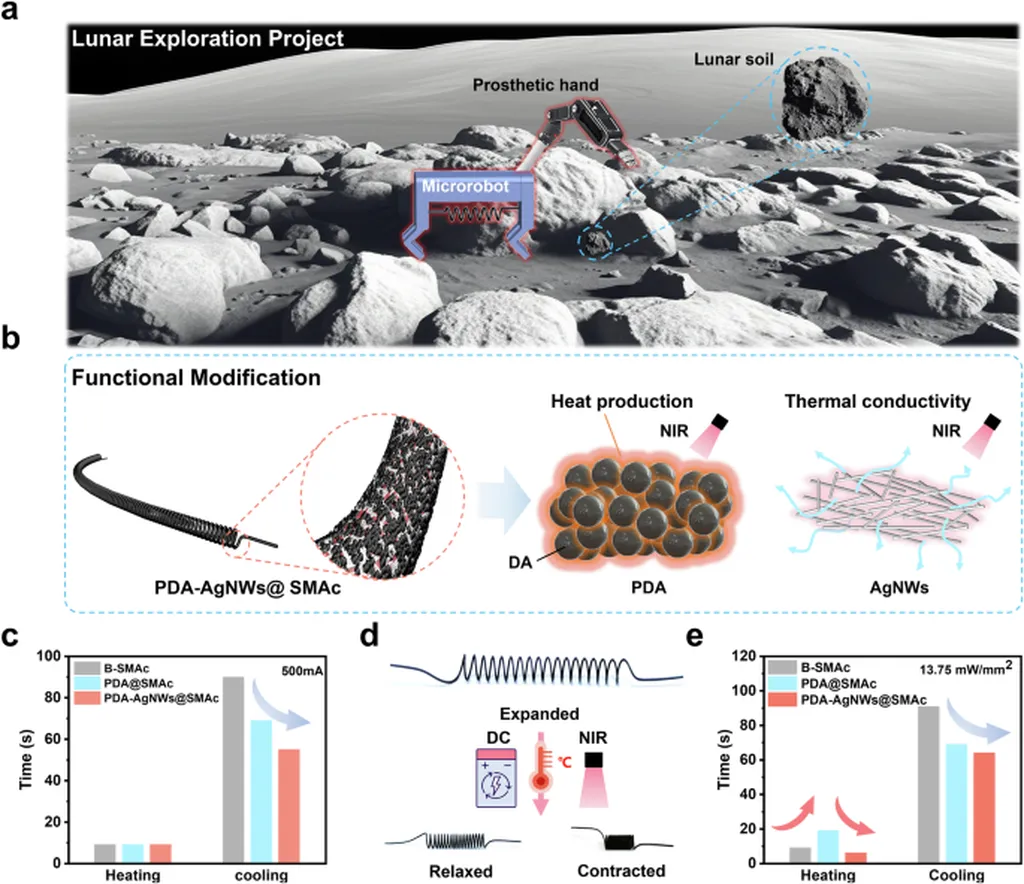In the realm of advanced robotics and aerospace engineering, a groundbreaking development has emerged from the State Key Laboratory of Advanced Fiber Materials at Donghua University. Led by Xian Li, a team of researchers has introduced a dual-responsive shape memory alloy (SMA) technology that promises to revolutionize the capabilities of robotic hands and microrobotic systems. Published in the journal *npj Flexible Electronics* (translated to English as “npj Flexible Electronics”), this innovation addresses longstanding challenges in the field, paving the way for more efficient and reliable energy systems.
Shape memory alloy fibers have long been recognized for their exceptional contraction strains and substantial load capacities, making them ideal for advanced robotic applications. However, their practical deployment has been hindered by slow thermal responsiveness and the need for wired electrical connections. The research team, led by Xian Li, has developed a novel surface modification technique that integrates polydopamine with silver nanowires, significantly enhancing the performance of SMA fibers.
“Our modified SMA fibers exhibit an approximately 3.2 times faster actuation speed under near-infrared laser irradiation and a 35% improvement in electrothermal responsiveness,” Li explained. This breakthrough enables wireless, fast-responding actuators that can be seamlessly integrated into microrobotic crawlers, demonstrating great potential for lightweight autonomous lunar rover applications.
The implications of this research extend beyond the realm of robotics. The energy sector, in particular, stands to benefit from the development of energy-efficient aerospace systems capable of operating reliably under extreme environmental conditions. The straightforward in-situ polymerization method used to fabricate these dual-responsive SMA fibers offers a scalable and cost-effective solution for various industrial applications.
As the world continues to push the boundaries of technological innovation, this research by Xian Li and his team at Donghua University represents a significant step forward. The integration of advanced materials and cutting-edge engineering techniques holds the promise of transforming the way we approach robotics, aerospace, and energy systems. With the publication of this work in *npj Flexible Electronics*, the stage is set for further exploration and development in these critical fields.

